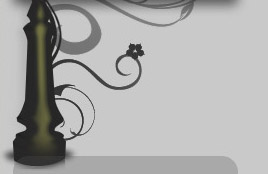 |
Fine Art Gallery 
"Friends are angels who lift us up to our feet when our own wings have trouble remembering how to fly."
- Unknown Amour d'Art FAQ's: We cannot be held accountable or forced to honor pricing mistakes or typos on our website. We do strive to be 100% accurate on our site, but there may be a time when there is an error. If such an error exists we will take immediate action to correct the situation. Each piece of fine art for sale on our site is either a limited edition or an original, one-of-a-kind piece. There may be times when only one or two pieces in an edition are available, and someone may have ordered it while our site is still showing it as available. Should this happen, call us and we will do all possible to locate that piece for you. In the case that it is not available, your purchase will be refunded to you.
We charge sales tax to all orders shipped in California.
The material or medium of the each artwork varies from piece to piece. The medium will be listed on the detailed view of each piece. The most common types of mediums and materials for our fine art paintings include the following: *Canvas *Clayboard Panel - Clayboard is made using a true artists hardboard which is coated with an ultra-smooth absorbent kaolin clay ground. Archival Paper - Archival paper is a permanent, durable, acid-free paper, intended to last a very long time. An archival print is designed to last a century — or longer. •Deckled Edge – This is a feathery paper edge. Deckle edges are created by the process of making handmade paper. The paper tends to thin out around the edges underneath a wooden frame called a deckle. Contemporary machine-made paper does not have a deckle edge. *Also called featheredge.* However, mold-made paper used for fine stationery is still made with a deckle edge. In other grades of paper, the deckle edge is trimmed off. •Gouache – Gouache is a painting medium similar to watercolor, but heavier and more opaque because a gum substance is added to the mixture of ground pigment and water. Gouaches, like watercolors, are usually on paper.
List Price/Gallery Retail refers to prices that are generally provided by the artist, publisher, or gallery where the art was purchased. The list price/gallery retail may or may not reflect what a piece will actually sell for on the open market, and is meant merely as a guide. Due to availability, popularity of the item or artist, market changes, and other factors, you are encouraged to purchase items based primarily on your appreciation of the image or recognition of the artist.
Proofs are fine art prints which have been authorized by the artist in addition to the limited signed and numbered edition. The total size of an art edition consists of the signed and numbered prints plus all outstanding proofs. If a set of proofs consists of more than one print, numbers are inscribed to indicate the number of the prints within the total number of the particular type of proof, (e.g. AP 5/20 means the fifth print in a set of 20 identical prints authorized as artist proofs). Proofs are generally signed by the artist as validation of the prints . AP: Artist Proof PP: Publisher's Proof HC: Similar to AP
Remember that ALL artwork, prints and originals, MUST be kept away from direct sunlight; sunlight will quickly bleach even the very finest oil paintings - which is why they use dim lights in museums.
If an item is SOLD OUT, it means that we, as gallery and dealers, can no longer obtain the requested prints, or canvas, at the original issue price. It does NOT mean that the print you seek is not available. It does mean that the artist, the artist gallery, and/or his/her publisher no longer have ANY prints, or canvases, available. WE HAVE A VERY LARGE INVENTORY; however, if we do not have the fine art for sale on our site, we will do our best to locate it on the secondary market, and purchase from other collectors, dealers, and galleries. The price is usually higher than the original issue price in this case. The actual price you may locate a print for on the secondary market will be determined by the supply and demand of that particular print or canvas. The more collectible they become, the more expensive they may also become. If the collectability and demand are high, and the availability is low, prices will most likely be higher, and the availability even lower. Because it is always a changing market, PLEASE CALL US to find out the current prices and availability. Prices are always subject to change.
|
 |

